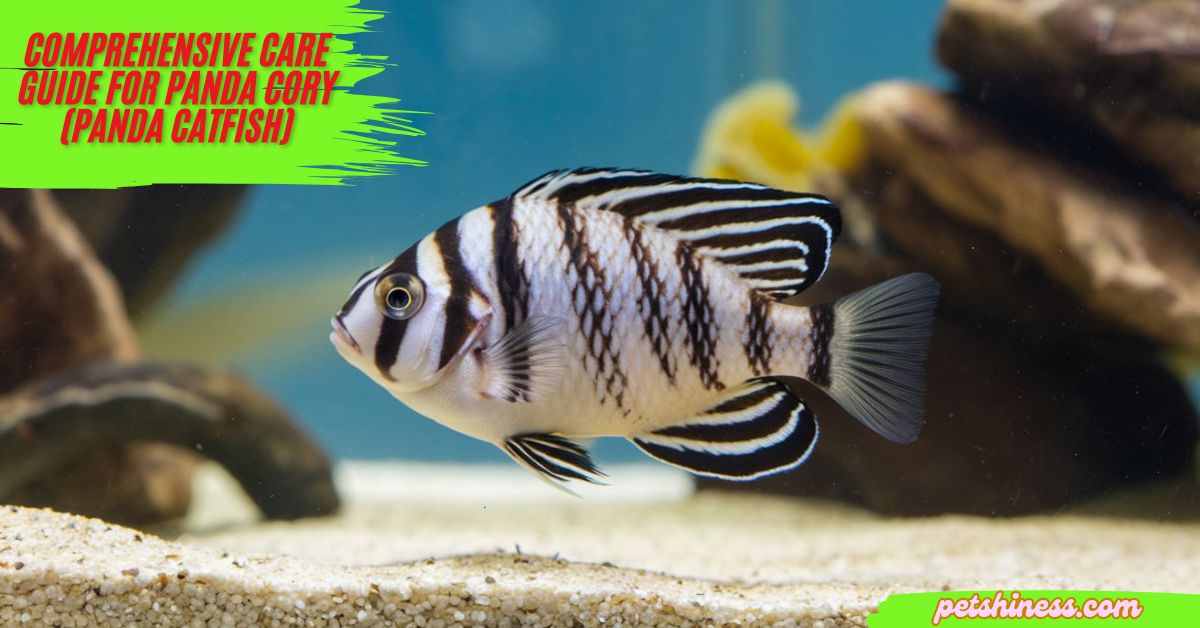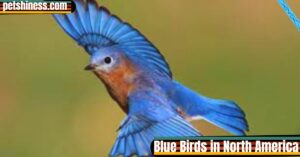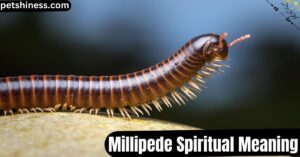The Panda Cory (Corydoras panda) is a peaceful and hardy freshwater fish that has become a popular choice among aquarium hobbyists. With their distinctive black-and-white markings and friendly nature, they add beauty and charm to any tank. Originating from South America, they thrive in community tanks and are relatively easy to care for if their basic needs are met.
In this guide, you’ll learn everything about Panda Cory’s, from their characteristics and ideal habitat to feeding routines and breeding tips. Let’s dive into the details to help you keep these adorable creatures healthy and happy!
Overview of Panda Cory
The Panda Cory is a small, social fish that belongs to the Corydoras family, commonly known as armored catfish. They are native to Peru, particularly in the cool waters of the Ucayali River and its tributaries. These fish are known for their stunning black patches around the eyes and fins, which resemble the markings of a panda bear. This unique appearance makes them a favorite among aquarists.
Typically, Panda Cory grow to about 2 inches in length and can live up to 10 years with proper care. They are peaceful fish that thrive in groups, making them ideal for community tanks. Their playful behavior and ability to “wink” with their lower eyelids make them a delightful addition to any aquarium.
Habitat and Tank Setup
Creating a comfortable environment for your Panda Cory’s is key to their well-being. In the wild, these fish inhabit cool, slow-moving rivers with sandy bottoms and abundant vegetation. Replicating this natural habitat in your aquarium is essential for their health and happiness.
For a tank setup, start with a 10-gallon tank for a small group of Panda Cory’s, although a larger tank is always better. Use a soft sand substrate to protect their sensitive barbels while they forage for food. Add live plants like Java Fern or Anubis to provide hiding spots and create a more natural environment. Driftwood and smooth rocks can also be used as decorations to make the tank visually appealing.
Water Parameters
Maintaining stable water conditions is crucial for Panda Cory’s.
- Temperature: Keep the water between 68–77°F (20–25°C), as they prefer cooler temperatures.
- pH Level: Aim for a pH range of 6.0–7.0 for optimal comfort.
- Water Hardness: These fish thrive in soft to slightly hard water, ideally around 2–12 dGH.
Perform regular water changes to keep the environment clean and free of harmful toxins.
How Big Do Panda Corydoras Get?
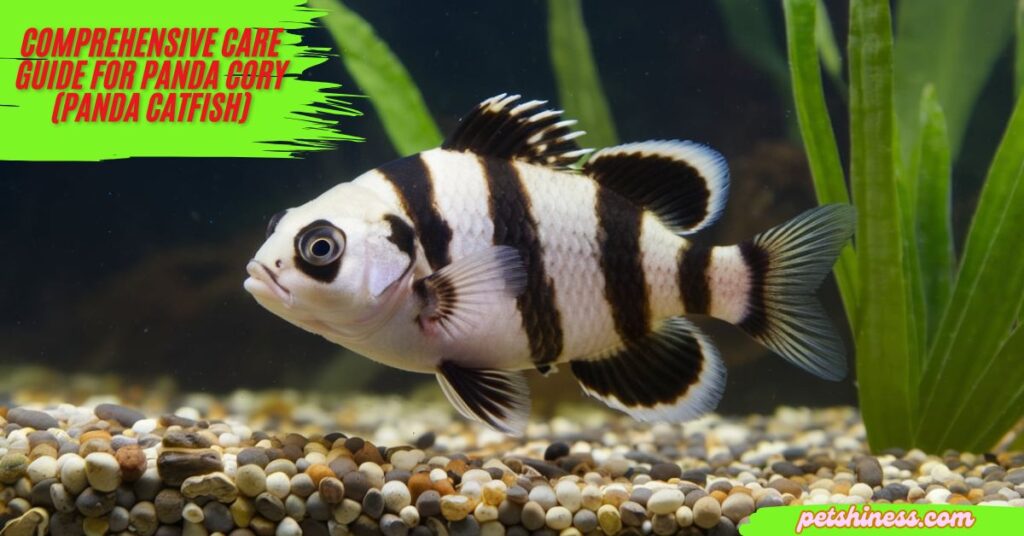
Panda Corys are small fish that typically grow to around 2 inches (5 cm) in length. Their small size makes them perfect for smaller aquariums or peaceful community tanks. Though compact, they are active and social creatures, often seen swimming together in groups.
Because of their size, they are considered one of the most manageable species for new aquarium owners, making them a popular choice for anyone starting with a freshwater tank.
Are Panda Corys Aggressive?
Panda Corys are non-aggressive, calm fish that thrive in peaceful community tanks. They prefer to be kept in groups and are not territorial. Their friendly nature makes them compatible with many other non-aggressive species like small tetras, rasboras, and guppies. These fish are peaceful bottom dwellers and are unlikely to cause any trouble in your tank.
Their gentle behaviour is one of the reasons why they are so loved by aquarium hobbyists.
How Many Panda Cory’s Can Be Kept in a 10-Gallon Tank?
A 10-gallon tank is a suitable size for a small school of Panda Cory’s. Ideally, you can keep 4 to 6 Panda Cory’s in this space, as they prefer the company of their own kind. It’s important to note that these fish are schooling fish, so having a group of them helps reduce stress and encourages natural social behaviors.
Though Panda Cory’s can live in a 10-gallon tank, providing more space will ensure they are more comfortable and have room to swim around.
Panda Cory Catfish Size
As already mentioned, Panda Cory’s typically grow to a maximum size of 2 inches (5 cm). This makes them one of the smaller species of Corydoras, and they are perfect for those who want to keep small fish in their aquarium. Despite their small size, they are quite active and enjoy swimming around the bottom of the tank, scavenging for food.
Their small size allows them to be kept in various tank setups, even with other small fish species.
Panda Cory Catfish Price
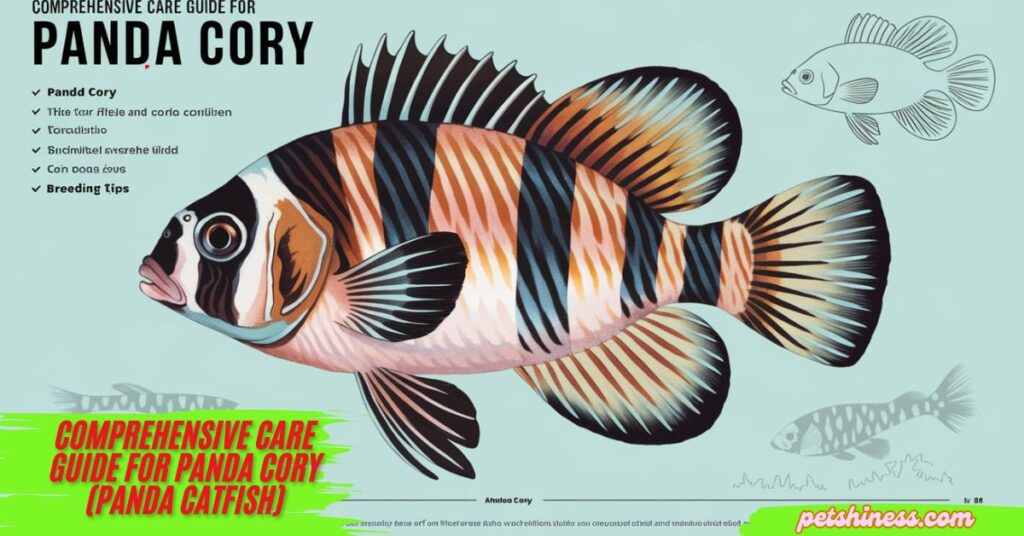
Panda Corys are relatively affordable, with prices ranging from $5 to $10 each. The price may vary depending on location, availability, and whether you are purchasing from a local pet store or online. Some sellers may charge more for rare, wild-caught specimens, while farm-bred Panda Corys are typically more affordable.
If you’re on a budget, there are plenty of affordable options available both locally and online.
- Read Also : Captivating Appaloosa Horse Names
Panda Cory Catfish Lifespan
With the proper care, Panda Corys can live up to 10 years. To ensure a long, healthy life for your Panda Corys, it’s essential to maintain a stable environment with regular water changes and good water quality. They thrive in temperatures ranging from 20 to 25°C (68 to 77°F), and their longevity depends on how well their tank conditions are maintained.
A healthy Panda Cory will bring years of enjoyment to your aquarium setup.
Panda Cory Catfish Tank Size
The ideal minimum tank size for Panda Corys is 10 gallons, but larger tanks are always better. A larger tank provides more swimming space and helps maintain water quality more easily. Panda Corys are bottom-dwellers, so having a tank with soft substrate, such as fine gravel or sand, is recommended. This type of substrate protects their sensitive barbels, which they use to search for food.
Larger tanks also provide room for other peaceful fish species, making Panda Corys great additions to community tanks.
Panda Cory Catfish Breeding
Breeding Panda Corys in captivity is relatively easy as long as the water temperature and conditions are ideal. A drop in water temperature, often achieved by a slight water change, can stimulate spawning. Once a female Panda Cory is ready to spawn, she will lay eggs on various surfaces like plants, decorations, or aquarium glass. Male Panda Corys will fertilize the eggs shortly after they are laid.
The fertilised eggs hatch within a few days, and the fry will require special care, including appropriate food to help them grow strong and healthy.
Panda Corydoras for Sale Near Me
If you’re interested in purchasing Panda Corydoras, many online retailers and local fish stores offer them for sale. You can check platforms like Aquabid, eBay, or visit local pet stores and aquarium specialty shops. There are also many online forums and social media groups dedicated to aquarium hobbyists where you can find Panda Corys for sale or trade. Always ensure you’re buying from a reputable source to ensure the fish are healthy and ethically sourced.
Are Panda Fish Real?
Yes, Panda Corys, also known as Corydoras panda, are real and distinct species of freshwater fish. They are part of the Corydoras genus, which includes a variety of catfish species found in rivers and streams of South America. Panda Corys are particularly admired for their panda-like appearance, with their black markings and white bodies, which make them stand out among other aquarium fish.
These peaceful fish are very much real and continue to be popular choices for aquarium enthusiasts.
Panda Cory Temperature Celsius
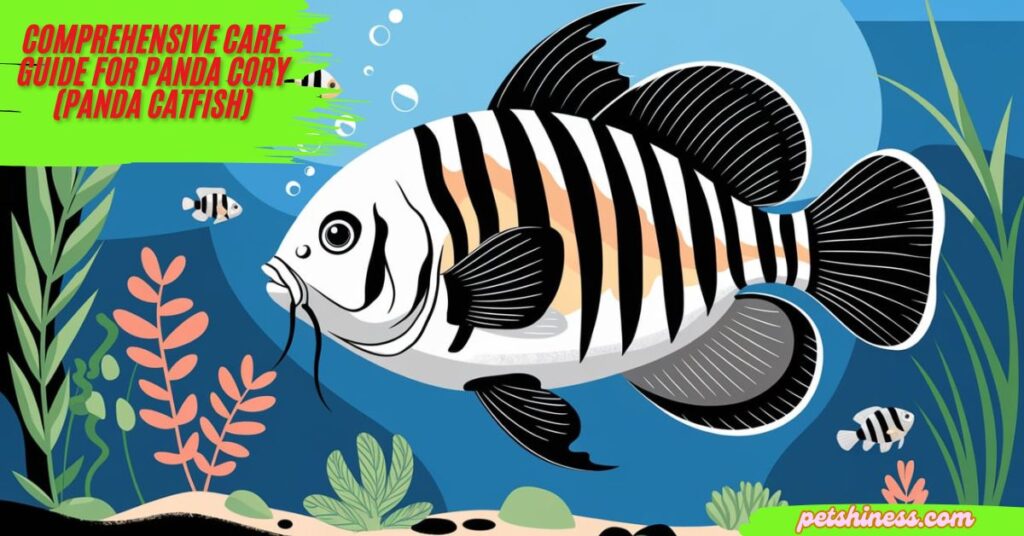
Panda Corys thrive in water temperatures between 20°C to 25°C (68°F to 77°F). It’s important to maintain this temperature range to keep them healthy and active. Too hot or too cold water can lead to stress and health problems, so using a reliable heater and thermometer is crucial for maintaining a stable environment.
These fish are accustomed to slightly cooler tropical waters, so regular monitoring of the temperature is essential.
Panda Cory Tank Mates
Panda Corys are peaceful, bottom-dwelling fish that get along well with a variety of other species. They do best in community tanks with other non-aggressive fish. Suitable tank mates include small tetras, rasboras, guppies, and other calm species. Avoid keeping them with aggressive fish, such as cichlids or large barbs, as they may harass the Panda Corys.
Panda Corys are great additions to peaceful aquarium setups, where they help maintain the bottom clean by scavenging leftover food.
What Do Panda Corys Eat?
Panda Corys are omnivores and eat a variety of foods. As bottom dwellers, they feed on sinking pellets, flakes, and occasional frozen foods like bloodworms or brine shrimp. They are excellent scavengers and will often clean up leftover food in the tank. To keep them healthy, it’s important to provide a balanced diet that includes both plant and animal matter.
Their scavenging behaviour is beneficial in a community tank, as it helps keep the substrate clean.
Types of Cory Catfish
The Corydoras genus includes a variety of species, each with its unique characteristics. Some popular types of Corydoras include the Bronze Corydoras , the Albino Corydoras, and the Salt and Pepper Corydoras . While each type has distinct colours and markings, they all share similar care needs, including soft substrate, clean water, and a peaceful environment.
Panda Corys are just one example of the many species of Corydoras available to aquarium enthusiasts.
Dalmatian Molly
Dalmatian Mollies are another popular fish species with striking black-and-white patterns, resembling Panda Corys. They are peaceful and thrive in similar tank conditions as Panda Corys. Dalmatian Mollies are livebearers, meaning they give birth to live young, unlike Panda Corys, which lay eggs. These fish can coexist in the same community tank, as long as they are not kept with overly aggressive species.
Dalmatian Mollies add a unique touch to any aquarium, and their appearance makes them a natural complement to Panda Corys.
Diet and Feeding Tips
Panda Corys are omnivores, meaning they eat a mix of plant-based and protein-rich foods. In the wild, they feed on small insects, worms, and plant matter. In an aquarium, it’s important to provide a balanced diet to meet their nutritional needs.
Start with sinking pellets or bottom-feeder tablets as their main food source. These are designed to reach the tank’s bottom, where Panda Corys prefer to eat. Supplement their diet with live or frozen treats like bloodworms, brine shrimp, and daphnia for added protein. Occasionally, you can also offer blanched vegetables such as spinach or zucchini for variety.
To avoid overfeeding, feed them twice a day in small quantities. Uneaten food should be removed promptly to maintain water quality. Remember, a well-fed Panda Cory is more active and vibrant in colour.
Gender Differences
Distinguishing between male and female Panda Corys is relatively simple once they reach maturity. The most noticeable difference is their size. Females are generally larger and rounder, especially during the breeding season, when their abdomen becomes more pronounced. This is because they carry eggs.
Males, on the other hand, are slimmer and more streamlined. When viewed from above, the difference in body shape is quite apparent. Understanding these differences is essential if you plan to breed Panda Corys, as selecting a healthy pair will increase the chances of successful spawning.
Breeding Panda Cory
Breeding Panda Corys can be a rewarding experience for aquarists. These fish are egg layers and require specific conditions to encourage spawning. Setting up a separate breeding tank is highly recommended to protect the eggs and fry.
Start with a 10-gallon breeding tank with a sand substrate and live plants like Java Moss. Keep the water temperature slightly cooler, around 70°F (21°C), as this mimics the seasonal changes that trigger breeding in the wild. Perform a large water change with cooler water to stimulate spawning behaviour.
When ready to breed, the male and female will engage in a unique “T-position,” where the male fertilise the eggs. The female then lays sticky eggs on plants or the tank walls. Once the eggs are laid, it’s best to remove the adults to prevent them from eating the eggs. The eggs will hatch in about 4–5 days, and the fry should be fed with infusoria or finely crushed fish food.
Health and Common Issues
Panda Corys are hardy fish but can develop health problems if their environment is not well-maintained. One common issue is barbel erosion, which occurs when the substrate is too rough or the water is unclean. Using soft sand and maintaining high water quality can prevent this issue.
Another potential problem is fungal infections, often caused by injuries or stress. These can be treated with antifungal medication and by ensuring a stress-free environment. Regularly monitor your fish for signs of illness, such as lethargy, loss of appetite, or unusual spots on their body. Preventive measures, like weekly water changes and a balanced diet, go a long way in keeping your Panda Corys healthy.
FAQs About Panda Cory
Can Panda Corys live with other fish?
Yes, Panda Corys are peaceful fish that get along well with other community fish like tetras and guppies.
What is the ideal group size for Panda Corys?
A group of 4–6 fish is ideal, as they are social creatures and thrive in groups.
How often should I clean the tank?
Perform a 25–30% water change every week to maintain a healthy environment.
Do Panda Corys need live plants in their tank?
While not mandatory, live plants provide hiding spots and help replicate their natural habitat.
Can Panda Corys eat algae?
They are not algae eaters but may occasionally nibble on it. Use algae wafers if additional cleaning is needed.
Conclusion
The Panda Cory is a fascinating and peaceful fish that adds charm to any freshwater aquarium. With their striking black-and-white markings and friendly behavior, they are a favorite among aquarists. Their low-maintenance nature makes them an excellent choice for beginners, while their playful antics keep even experienced hobbyists entertained. By replicating their natural habitat and maintaining clean water conditions, you can ensure they thrive in your tank.
Providing a balanced diet, a social group, and proper care will keep your Panda Cory’s happy and healthy for years to come. Whether you’re enjoying their graceful swimming or observing their unique interactions, these adorable fish are sure to become a cherished part of your aquatic family.

Jerry John ensures petshiness.com runs smoothly and securely. With a passion for tech and a focus on user experience, Jerry manages the site to deliver top-notch content and functionality.
